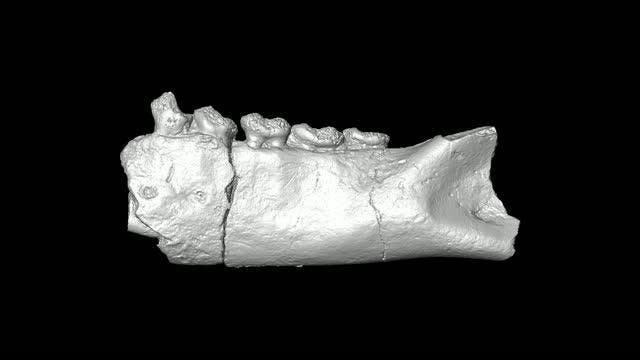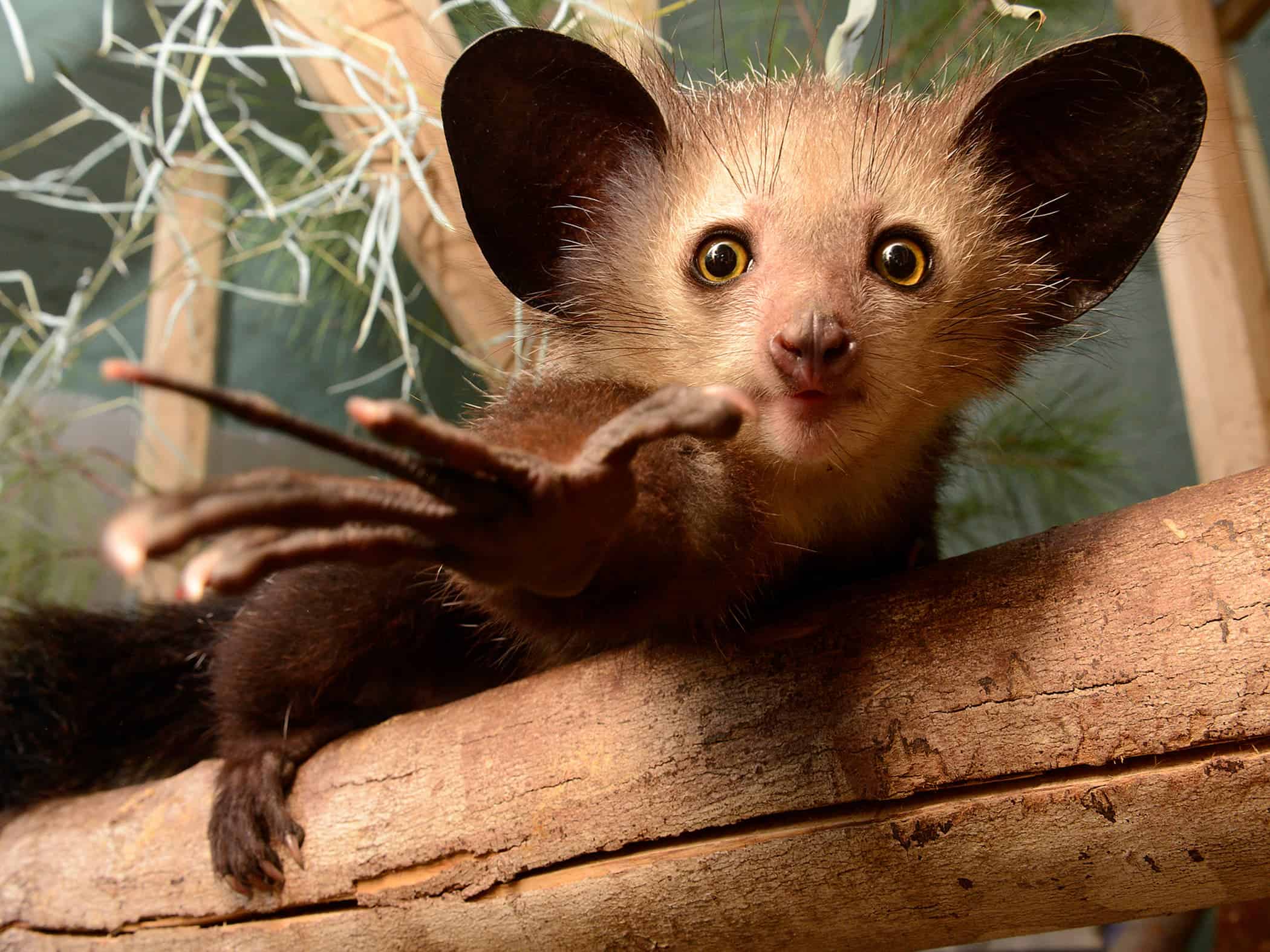Lemurs are only found on the island of Madagascar, but no one knows why that is or how they got there. A “bat”, some fossils, and a strange-looking, large-eyed creature have given us some clues. Researchers examined a fossil that had been neglected for about 50 years and found that it held some important information about the origin of lemurs.
Three fossils of three partial mandibles were found in 1967 in Kenya that dated back to the early Miocene period (23 to 16 million years ago). The creature was named Propotto leakeyi and was first thought to be a new species of a loris — a nocturnal primate with large eyes — by paleontologist George Gaylord Simpson. However, his colleague, Alan Walker, convinced him that it was a fruit bat, so a bat it was declared. To be fair, their only clues were inch-long lower jaw bones and tiny teeth. Since that declaration, the identity of P. leakeyi has not been questioned.

Half a century later, the late paleontologist Gregg Gunnell of Duke University was reexamining the fossils when something struck his eye. There was the stump of a broken front tooth that would have stuck out like a dagger, along with primate-like hind teeth. These combined traits are only known in one other animal: the aye-aye, a lemur.
To verify the identity of these tiny jaws, other researchers at Duke University took microCT scans of the jaws of 42 living and extinct animals groups, including bats, treeshrews, and primates. They then compared the shape of their teeth to P. leakeyi using a computer program. In addition, more than 395 anatomical features and 79 genes for 125 mammal species, living and extinct, were compared.
The researchers found that P. leakeyi shared features with a similar primate that lived 34 million years ago in Egypt called Plesiopithecus teras — also a relative of the aye-aye. The aye-aye is one of the earliest known species of lemur. It is a small, nocturnal primate and the only primate with rodent-like dentition, which it uses to bore wood to search for insects.

This discovery questions the current theory of how lemurs evolved. The original theory states that all the lemurs migrated to Madagascar at the same time, more than 60 million years ago. The presence of the fossils could mean that two different types of lemurs had already evolved in Africa before migrating to Madagascar. One type may have evolved into the aye-aye, and the other type may be the origin of the hundred other species of lemurs. This conclusion makes some sense, as, at the time, the sea levels were lower, so lemurs would have less distance to travel. It’s fascinating that so much about this fossil has been uncovered after so many years in storage.
Journal reference: “Fossil Lemurs From Egypt and Kenya Suggest an African Origin for Madagascar’s Aye-Aye,” Gregg F. Gunnell, Doug M. Boyer, Anthony R. Friscia, Steven Heritage, Fredrick Kyalo Manthi, Ellen R. Miller, Hesham M. Sallam, Nancy B. Simmons, Nancy J. Stevens, Erik R. Seiffert. Nature Communications, August 21, 2018.






